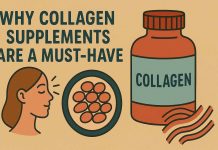The beverage industry is buzzing with innovation and opportunity, and there’s never been a better time to consider starting a manufacturing business. As tastes evolve and consumer preferences shift towards more diverse and healthy options, the door has swung wide open for entrepreneurs ready to make their mark.
The U.S. beverage market is predicted to reach $1.6 trillion by 2025, indicative of a thriving industry with enormous potential.
Why Start a Beverage Manufacturing Business?
Given the industry’s exponential growth, starting a beverage manufacturing business can be a smart, forward-looking investment. With the emergence of new beverage categories and growing interest in healthy and organic options, there’s ample room for innovation.
Whether it’s a craft soda brand, a health-boosting smoothie line, or a unique energy drink, there’s space in the market for ideas, big and small. Couple this with rising consumer spending on beverages, and it’s clear why this industry is an enticing prospect.
Understanding the Market
However, before plunging into production, it’s crucial to understand your market thoroughly.
- Identify your target demographic: Are you targeting millennials with a penchant for organic beverages or busy professionals needing a quick energy boost?
- Study market trends: Is there a rising demand for low-sugar or plant-based drinks? These trends could shape your product development.
- Analyze your competition: What are other brands doing well, and where are the gaps that your product could fill?
Formulating Your Beverage: Partnering with Experts
The formulation stage can make or break your product. It’s not just about creating a tasty beverage; it’s also about ensuring it aligns with your brand’s promise, is cost-effective to produce, and appeals to your target audience.
This is where partnering with experts like MetaBrand Corp can be invaluable. With their decade-long experience and vast ingredient library, they provide a tried-and-true perspective on how to formulate your beverage successfully.
Idea Generation and Concept Development
Once you are through the formulation stage and have a handle on the market, it’s time to generate concepts for your beverage. This is an exciting stage where your creativity can really shine.
Do you want to create a superfood-packed smoothie or a range of artisanal tonics? Whatever your concept, it’s crucial to ensure it aligns with market trends and consumer preferences.
Consider holding brainstorming sessions, engaging a creative team, and always being open to innovation.
Manufacturing Considerations
As you transition from formulation to manufacturing, several factors must be considered. Here’s a quick rundown:
- Equipment: Will you need specialized machinery for your product?
- Production capacity: Can your facilities handle your projected output?
- Quality control: How will you ensure consistency in every batch?
- Scalability: How easy would it be to increase your production if demand for your product suddenly spiked?
- Sourcing raw materials: Do you have reliable suppliers for all the necessary ingredients? Consider the potential impact of supply chain disruptions.
- Waste management: What procedures will you implement to minimize waste and operate in an environmentally-friendly manner?
- Safety regulations: Have you familiarized yourself with the safety protocols for operating heavy machinery, handling food products, and maintaining a clean workspace?
Importance of FDA & TTB Compliance
Remember, compliance with FDA and TTB regulations is non-negotiable. These agencies oversee everything from labeling to health claims and alcohol content. Understanding the rules for your product and ensuring your business is compliant. Missteps can lead to costly fines, product recalls, or worse.
Packaging and Labeling
Never underestimate the power of packaging. It’s often the first thing consumers notice about your product. Great packaging should be visually appealing and communicate your brand’s message.
Similarly, labeling should be clear, accurate, and compliant with regulatory requirements. Remember, your package is your silent salesperson.
Distribution Strategies
Getting your product on shelves is the next hurdle. Whether you opt for direct distribution or work with a distributor, you’ll need a solid strategy. Here are a few steps to consider:
- Identify your retail targets: Are they local grocery stores, cafes, or big-box retailers?
- Make a compelling sales pitch: Why should retailers stock your product, and how will it drive sales?
- Plan for growth: How will your distribution strategy scale as your sales increase?
- Delivery logistics: How will you ensure your product arrives in good condition and on time to the retailers?
- Online sales: Will selling your product online help it reach more customers?
- Product placements: Would it be beneficial to negotiate specific store placements (endcaps, checkout coolers) to increase visibility?
- Partnerships: Could you partner with other businesses, like cafes or restaurants, to offer your product to their customers?
Marketing and Branding
To succeed in the crowded beverage market, you must develop a compelling brand and marketing strategy. That’s the only way to stand out. Here are some points to focus on when marketing and branding your business:
- Define your brand’s identity:
Focus on what makes your product unique and why consumers should choose it over competitors.
2. Develop a marketing plan:
You must devise a plan for reaching your target audience, and what channels will you use?
3. Engage your consumers:
Ensure you build a loyal customer base and encourage repeat purchases.
- Social media strategy:
Which platforms does your target audience use most? How will you engage with them there?
5. PR activities:
How can you generate buzz around your brand (press releases, launch events, etc.)?
6. Community involvement:
How could local sponsorship or community involvement enhance your brand image?
7. Consumer feedback:
How will you gather and implement feedback to continuously improve your product and brand?
Test marketing:
Consider test marketing in a specific area or online before a full-scale launch. This could help gauge consumer response and make any necessary tweaks.
Financing Your Beverage Manufacturing Business
Securing sufficient funding is critical to getting your business off the ground. Options may include self-funding, pitching to angel investors, securing a bank loan, or crowdfunding.
Each financing route has pros and cons, so consider your best option that aligns with your business goals and is best for risk tolerance.
Challenges and How to Overcome Them
Like any business, the beverage industry has its hurdles. These might include high competition, regulatory challenges, or fluctuating commodity prices. However, these obstacles can be overcome with thorough research, sound planning, and a bit of creativity.
Remember, every challenge is an opportunity in disguise.
Conclusion
Starting a beverage manufacturing business is undoubtedly a challenging yet exciting endeavor. It’s an industry ripe with opportunity, particularly for those who are innovative, resilient, and responsive to consumer trends.
With the right idea, a solid understanding of the market, a dash of creativity, and a bit of help from industry experts like MetaBrand Corp, your beverage business can succeed and make a lasting mark on the industry.













